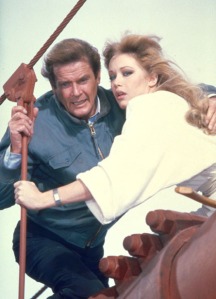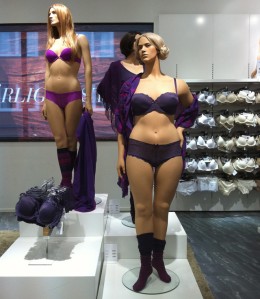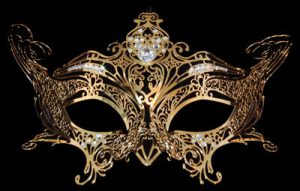We are travelling through the history of gender identity: starting with Shakespeare and then progressing to the 1900s, we’ve proved that gender is not a concrete thing, it is what we make it. Now I want to make a modern example of how far gender performance has advanced…or hasn’t.
I’ll give you a hint…when I say (hot) British spy, lots of cool gadgets and technology and most importantly, drop-dead gorgeous women, who do you think of? If you guessed James Bond, you get the gold star for this post. Bond is infamous for his women-his relationships with them, and his inability to resist them even when they want to kill him. Regardless of whether they want to do him or dispose of him, the various representations of female characters in the James Bond films have drastically changed since the first film premiered in 1962.
That first movie Dr. No, with Sean Connery as James Bond, set the precedent for how Bond girls were to be perceived in the coming decades. Until Pierce Brosonan took over as Bond in 1999, Bond girls were pretty much damsels in distress that needed to be rescued, or girls with guns that didn’t know how to use them. Of course, Bond would always swoop in and save them at the last minute, but still, what kind of portrayal of women was that? These films were (and are) immensely popular. Social Cognitive Theory argues that individuals will observe, imitate and learn from others, even fictional others, in order to monitor their own behaviours and values (Neuendorf et. al., 748). We already know that gender is social constructed, so if this is the picture of women being given to society to follow, women in society would think it would be a good idea to all look like and act like Bond girls.
One of the standout Bond movies for the atrocious depiction of women is the 1985 A View to A Kill. Roger Moore is Bond and Tanya Roberts is Stacey Sutton, the film’s love interest. Throughout the entire movie, she does absolutely nothing to help Bond, only stands and watches or does something silly to try to help. I was pretty horrified at this view of women, especially in a Bond flick from the 80s.
In most of the Bond movies pre-21st century there have been moments were women are degraded at the hands of the infamous spy. These are a product of society at the time, and it is no surprise that in the later 90s the perception of women in the movies began to change; there was an increased interest in gender-based literature at this time (Brown 152). Since all of the Bond movies are based on novels or short stories by Ian Fleming, there was a concerted effort to change the way women were viewed.
Once the 21st Century hit, the Bond girls became increasingly useful in the movies. While they were still objectified as sex objects, they sometimes also had a hand in the action…and were sometimes even cast as villains. The culmination of this advancement for me was in the 2002 flick Die Another Day, where Halle Berry played Jinx, a CIA agent that became the object of Bond’s affections. While he stil l slept with her, she had a mission other than a personal vendetta against the villain, and knew how to carry it out. This progression of women is furthered in the 2008 film Quantum of Solace, where Bond doesn’t even sleep with the object of his affections, and she carries a gun with just as much skill as he does.
l slept with her, she had a mission other than a personal vendetta against the villain, and knew how to carry it out. This progression of women is furthered in the 2008 film Quantum of Solace, where Bond doesn’t even sleep with the object of his affections, and she carries a gun with just as much skill as he does.
The identities of women in the Bond films has progressed along a parallel with society’s views of women-as the years progressed they became a less concrete identity and became more fluid, to the point that now they are almost transferrable with a masculine identity. No Bond film will ever see a woman who doesn’t need Bond for something (largely because that defines half his character), but they have admittedly changed to embody multiple “I-slots” at a time as women of society do.
I am a huge Bond fan-despite his atrocious treatment of women in some of the past movies, there’s just something about him I find appealing. That said, maybe I’m just conforming to the ideas society wants me to have about how he treats our fairer species. Then again, if I was complicit I probably wouldn’t be writing this post…
Our journey through the ages of gender identity has been enlightening for me and I hope for you as well. I know in my research I learned a lot about the perception of gender, specifically women, and how that is changing and growing in our society as we move forward. I think gender is something that will always be socially constructed, but as long as we realize that life is a stage, and we as gendered individuals play on it, it might be easier to find our own gender identities.























 male and female figure” (74). People in Shakespeare’s time were not entirely keen on a boy playing a girl playing a boy…who was in love with a man. This was because the boy actress was seen to have a fluid gender, and that meant that he could have one sex, but perform as both a male and female (Dorwick 76). As a result, he could inhabit more than one “I-slot”, something that Fuss argues is essential for the true understanding of what it means to be a woman or a man (34). However, it created ambiguity as to what gender the boy actually was, and how he should act…and people, even in Shakespeare’s time, like things to be black and white.
male and female figure” (74). People in Shakespeare’s time were not entirely keen on a boy playing a girl playing a boy…who was in love with a man. This was because the boy actress was seen to have a fluid gender, and that meant that he could have one sex, but perform as both a male and female (Dorwick 76). As a result, he could inhabit more than one “I-slot”, something that Fuss argues is essential for the true understanding of what it means to be a woman or a man (34). However, it created ambiguity as to what gender the boy actually was, and how he should act…and people, even in Shakespeare’s time, like things to be black and white. 